Rarely have I sailed a venue where the wind is truly steady. The majority of my experiences wind is a fluctuating force. Which is why it’s really important to learn to flow with the gust and lulls and use your harness and weight correctly to dance in rhythm with the conditions rather then join the windsurfing rodeo show. Similar to horseback riding if you’re not in sync you’ll get bounced all about with a potential of an unseemly dismount. The key to perfect rhythm is anticipating what the wind is going to do. The only way to know what’s coming your way is to start reading the wind before it hits you. Keep a steady eye upwind to see what your wind partners next step is going to be… Steady, a gasping lull or a heaving gust?
Next start preparing your stance for the change in wind force if there is one… For lulls lift your hips (weight) up towards the nose of the board to get in a more upright position and with a gust drop your hips (weight) down over the back leg without using your arms a stitch to control the sudden power in your sail. If you’re too upright when a gust hits you, you’ll be over the horns so to speak or you’ll sheet out (even if it’s just for a second, it’ll pop the nose of the board up as all your body weight weighs down the back of the board), swerve and/or spin out as air gets caught around the fin hence the ‘Bucking Bronco’ experience. It’s much more enjoyable and a safer ride if we learn how to tango correctly with the wind before we hit the liquid dance floor!
Lighter Winds
In lighter winds your stance looks more like the shape of a 7 as you’re more upright.
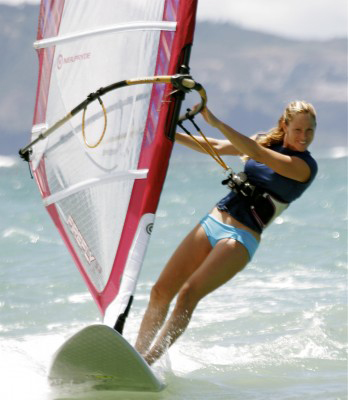
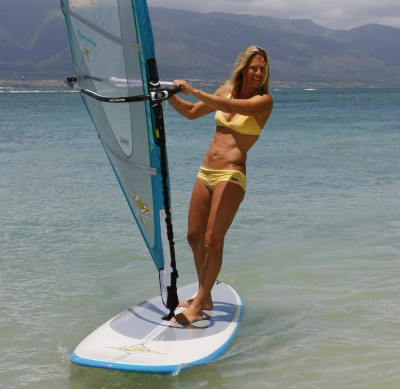
In high winds your stance looks more like the shape of a 6 as you crunch to sheet in with your harness. Not your arms!
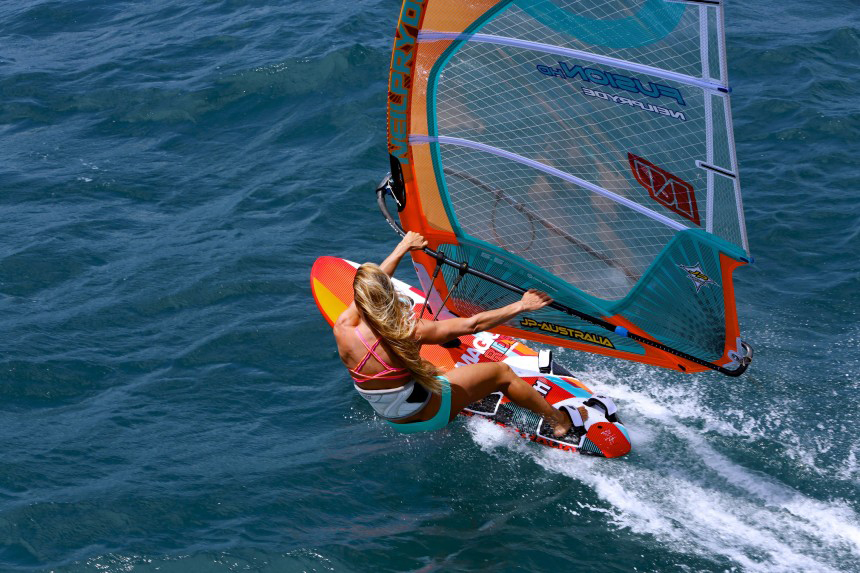
The only way to know what’s coming your way is to start reading the wind before it hits you. Keep a steady eye upwind to see what your wind partners next step is going to be…
The photos below are examples to show you how the hips move when you’re hooked in shown without a sail so yo can really see the movement of the hips from up and towards the nose of the board in light winds and down back over the back foot in high winds. The arms only bend because you’re using your hips to to crunch in which means your head gets closer to the boom. As a by product the arms need to bend in order to accommodate that action, but you are NOT using your arms to hold the power in the sail. Your hips and legs should be doing all the hard work!
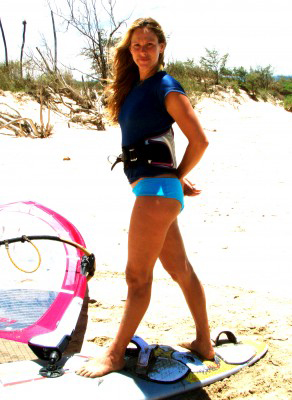
Light wind ‘offering it’, hips up.
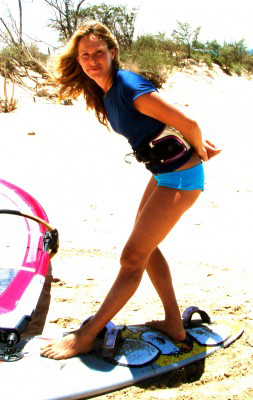
High wind ‘sitting on it’, hips down.
---------------------------------------------------------
Light Winds and Managing Lulls
Hips up (with our bellybutton facing towards the nose of the board) while you shift your weight towards the front leg in effort to bring your sail in a more upright powerful positions which will enable you to sail without stalling through a lull. Lifting you hips up lifts the sail up.
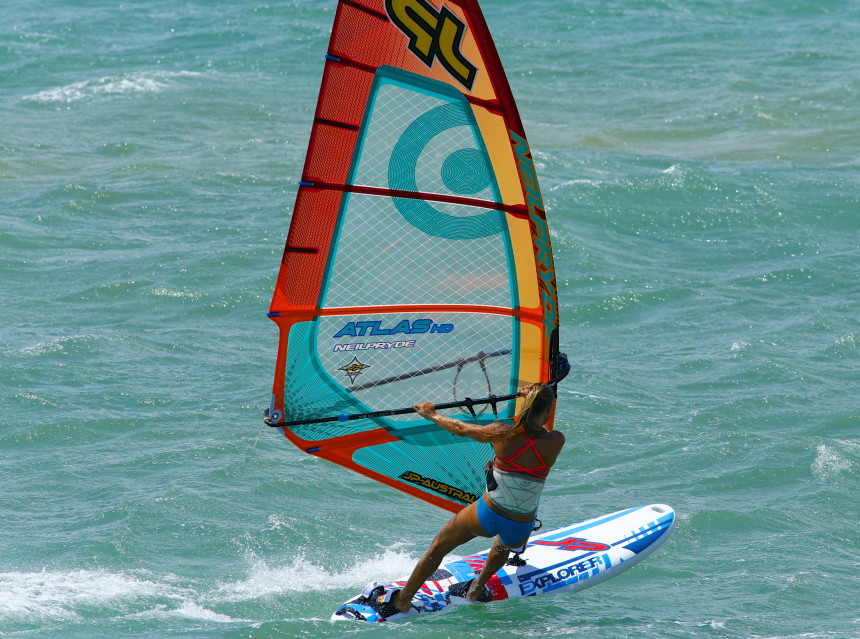
Light Wind Sailing Stance
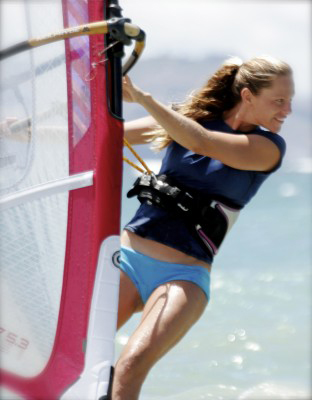
p.s. if you add more twist you head upwind!
High Wind Sailing and Managing Gusts
Weight drops down over the back leg and into the harness. Hips are facing forward (bellybutton points towards the nose of the board as much as possible). Head is looking where you are going even a bit upwind as it slows down the sensation of speed ( just like keeping your eyes on the road while cycling keeps you balanced rather then looking sideways or down). It also ensures a comfortable and in control ride. As you sheet in the sail via your harness you have to do a crunch like maneuver by pulling in with our stomach muscles which nears your head to the boom and bends your arms… Though the arms are not being using to hold the power in the sail. You should be harnessing that power through the harness via your hips and legs. Your thighs should burn from the effort! When you become an expert at high wind sailing you should be able to readjust your bathing suit bottoms with your back hand while you’re doing ‘mach four’ across the seas.
High Wind Sailing Stance
Neutral Sailing Stance
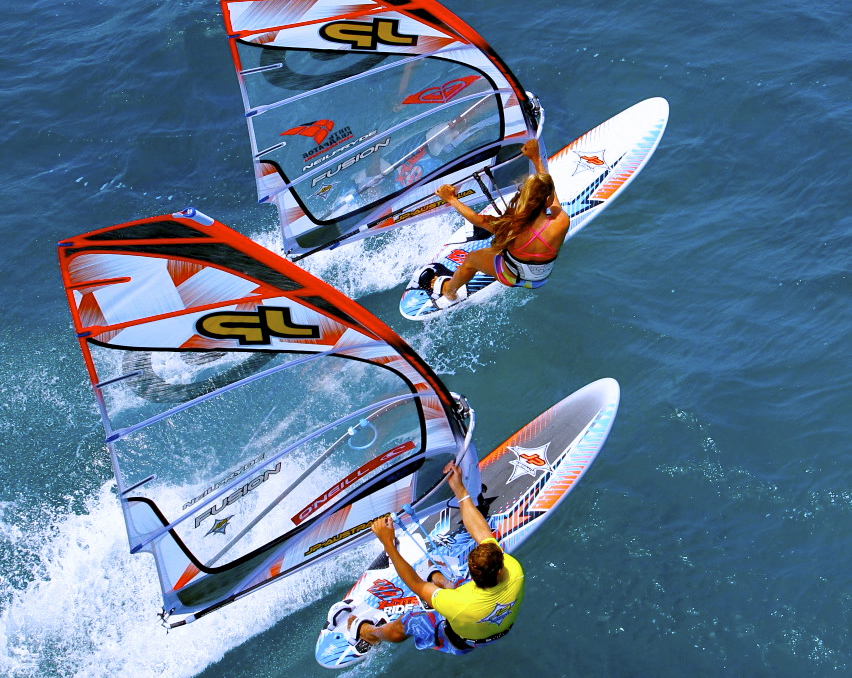
When you are perfectly powered up you are in a neutral position with weight centered over both legs evenly. Not too up nor down. Though you should always be facing forward eyes scouting upwind conditions in anticipation of wind fluctuations. I don’t think I’ve ever stayed in a neutral sailing position for long…. probably only in passing on my way to getting lower or lifting my hips sky high.
Lot’s a warm Hawaiian breezes,
Aloha

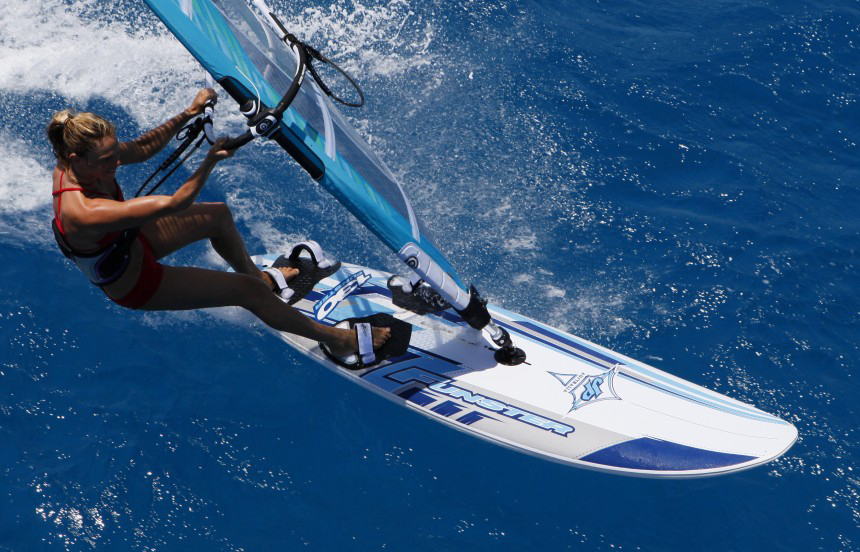
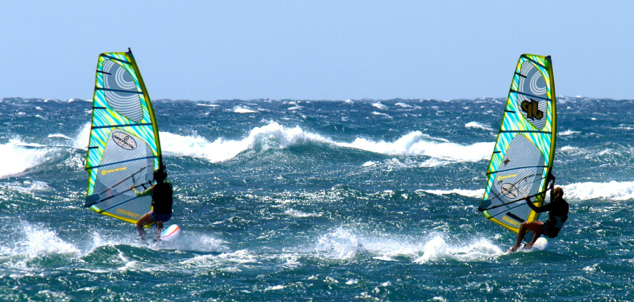


No comments.